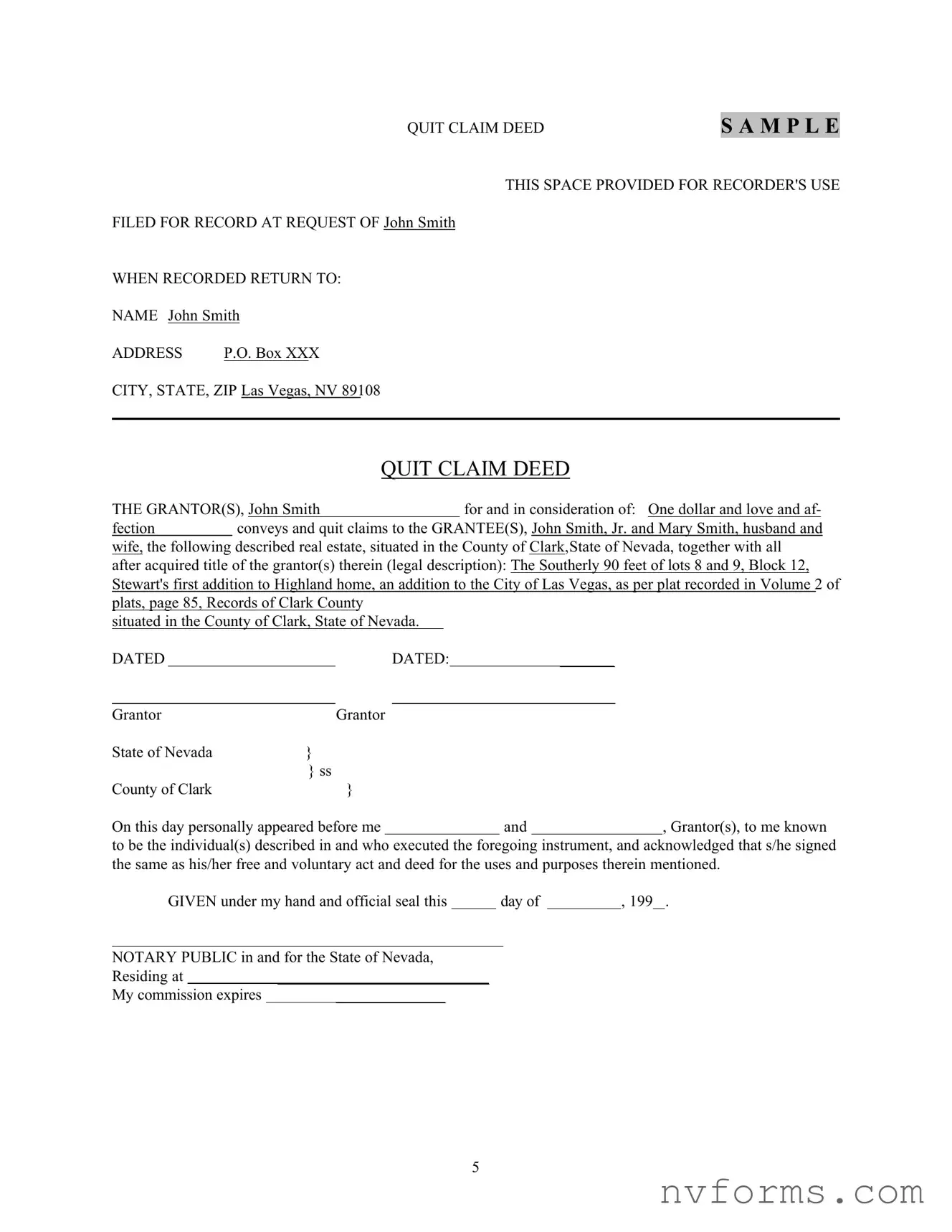Filling out a Nevada Quit Claim Deed form can appear straightforward, but errors can easily be made. These mistakes may jeopardize the validity of the document and can lead to complications down the road. To ensure the process goes smoothly, it's important to be aware of common missteps.
Firstly, incorrect or incomplete information about the grantor(s) and grantee(s) is a common error. This includes misspelled names, wrong addresses, or incomplete identification. The Quit Claim Deed requires precise details about the parties involved to establish clear ownership and rights over the property.
Another frequent mistake is an inadequate legal description of the property. The deed must include a detailed legal description that goes beyond just the address. It should encompass the lot number, block number, subdivision name, and any other information that uniquely identifies the property. This legal description ensures there's no ambiguity about which piece of real estate is being transferred.
People often overlook the signing and notarization requirements. The deed must be signed by the grantor(s) in the presence of a notary public. Failing to properly notarize the document can invalidate the transfer. Each state, including Nevada, has specific notarization laws, and it's crucial to comply with these to ensure the deed is legally binding.
A subtle yet important detail that gets missed is the consideration mentioned in the deed. Even symbolic amounts like "One dollar and love and affection" need to be clearly stated to fulfill the legal requirement of consideration in a property transfer.
The filing and recording procedures are also areas where errors occur. Once completed, the Quit Claim Deed needs to be filed with the appropriate county recorder’s office to become part of public record. Failure to properly file or record the deed can lead to issues in establishing a clear chain of title.
Last but not least, individuals often misunderstand the after-acquired title. This term refers to any interest in the property that the grantor obtains after the deed has been executed. Ensuring that the deed correctly addresses the transfer of after-acquired title is essential for protecting the rights of the grantee(s).
In summary, attention to detail is crucial when completing a Nevada Quit Claim Deed. Errors in the form can lead to a variety of issues:
- Incorrect or incomplete grantor/grantee information
- Inadequate legal description of the property
- Mistakes in signing and notarization
- Failure to specify consideration
- Errors in filing and recording procedures
- Misunderstanding about after-acquired title
By avoiding these common missteps, you can ensure a smoother property transfer process and protect your interests.


